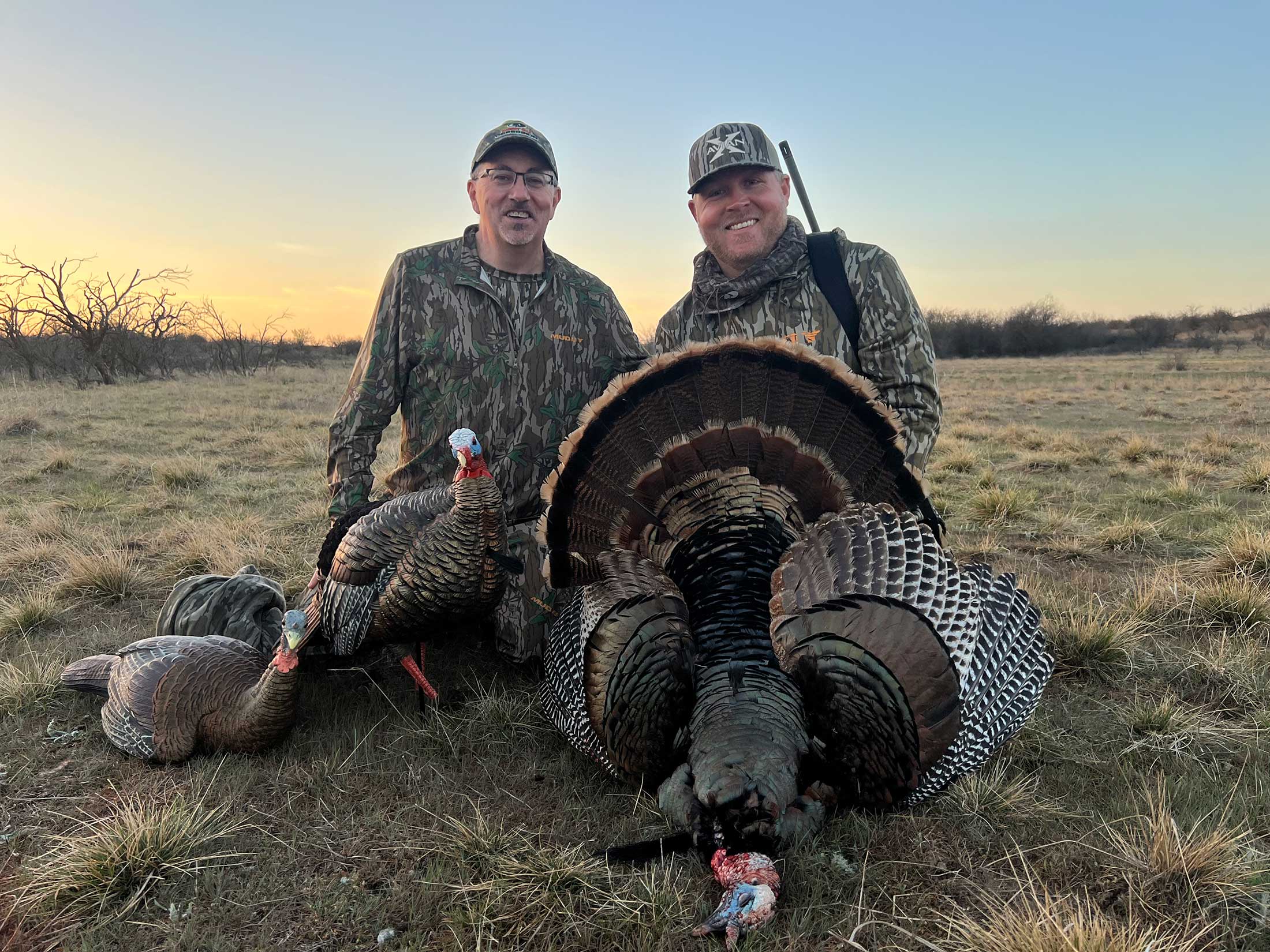How to Decoy Turkeys, Advanced Tactics with Mark Drury

The very best turkey decoys today are more like works of art than pieces of hunting gear. They are incredibly realistic, and if you love turkeys like I do, then they’re nothing short of beautiful. But that doesn’t mean you can just throw a decoy out in a field and start blasting long beards.
Mark Drury, one of the all-time great turkey hunters working in media today, says that depending on the situation, you’re likely to see as many negative responses to a decoy as you are positive ones. I recently had Drury on the Outdoor Life Podcast to discuss the details of how to decoy turkeys more effectively — and when to not use decoys at all. (You can listen to this episode on Apple, Spotify, or wherever you get your podcasts.)
When to Use Turkey Decoys
Drury says he uses a decoy on 60 to 70 percent of his turkey hunts (he’s a big believer in Avian X dekes). But keep in mind that he does a lot of hunting in the open country of southern Iowa. Plainly put, if a tom can see your calling position clearly from beyond gun range, it’s wise to use a decoy to draw him in.
Otherwise, he’s likely to stand at 80 to 100 yards looking at you, possibly strutting and gobbling. When no hen appears, he’ll simply walk off.
When Not to Use Turkey Decoys
On the flip side, if a tom can’t see your position until the moment he’s in gun range, you’re better off not using a decoy and relying solely on calling. This is often the case when hunting in the woods. In thicker especially woods, running a decoy can be detrimental.
Say, for example, you have a clear shooting lane about 30 yards long. So you put your decoy at 20 yards. If the tom gets to 40 yards and spots your decoy, he might stop right there, gobbling and expecting the hen to come to him in cover — and you’ll never get a shot.
It’s also unwise to use jake or tom decoys on public land, as other hunters could mistake them for the real thing. When hunting public ground always transport decoys in bags with a strip of blaze orange attached.
What’s the Best Turkey Decoy Spread?
See It
These days, Drury’s go-to decoy setup is a laydown hen and a jake set off to the side. The hen presents a posture that tells toms she’s ready to breed. The jake creates more visibility and adds an element of competition to the scene.
“I just think that overall, the [laydown hen] position elicits a more positive response,” Drury says. “The exact same message you’re sending with your calling, you’re backing that up with a hen that’s ready to breed.”
Drury says the jake/laydown hen combo is most effective in the early part of the season and in areas where there’s a strong turkey population (lots of jakes running around). However in areas where turkey numbers are lower, Drury will run a single hen.
Later in the season, when the flock has broken up and birds have already gone through their pecking order, Drury thinks twice before running a jake.
“I have seen oftentimes that with the presence of a male decoy, or male turkey in the field, birds will shy away from it,” Drury says. “It all depends on whether you’re working a dominant bird, a bully group of 2-year-olds or a single turkey that’s [sub dominant].”
A laydown hen or a feeding hen is the least aggressive decoying approach.
Drury will only use a strutter decoy — the most aggressive approach — when he needs to draw a dominant bird from long distance.
Tips for Decoying in Turkeys
Understand the Pecking Order and Flock Dynamic
To use decoys most effectively, you need to understand the turkeys you’re hunting. This comes through good scouting and piecing together the flock dynamic. For example, the boss tom with a bunch of hens will be hard to decoy in with a single hen. But a satellite 2-year-old long beard might come charging in to a single hen deke.
Glass birds in the mornings and roost them in the evenings to better understand their behavior. It also helps to understand the general spring turkey behavior cycle. Watch Drury explain in the video below.

Watch the Weather
Drury says it’s also important to pay close attention to weather when planning your hunts.
“There are certain days when you’ve got low pressure and they’re not in a good mood, but I’ve also seen extreme high pressure do the same thing to them. We call it ‘high pressure hush,’” Drury says. “It’s beautiful weather, they gobble their tales off on the limb, and they actually de-charge their battery because they gobbled so hard, and then the rest of the morning they’re quiet. Those really pretty days, sometimes they’re very vocal in the morning and then the rest of the day you don’t hear a gobble.”
Drury says he has his best luck on days when a front is approaching. Toms might not gobble the hardest, but they will be very decoyable because they’re typically out searching for hens before the weather moves in, Drury says.
Details Make the Difference
Even though you’re hunting with decoys, you still want to set up between where a gobbler is roosted and where he wants to be. You also need to plan for worst case scenarios. Sure, it’s possible that a long beard will strut all the way into gun range and jump on your decoy. But it’s more likely that he’ll hang up at the edge of gun range or skirt the spread.
Have a plan so that you can still get a good shot even when the tom doesn’t finish.
Lastly, brush yourself in well and get comfortable. It’s easier to be patient and still when you’re well hidden and relaxed.
“We take a clipper with us and if we’ve got brush, that’s great for cover, but we clip the top off so all the turkey would see is your head and your gun can swing smoothly over [the cover],” Drury says. “So think about those situations and if you’re going to clip brush, do it quietly.”
Read Next: Turkey Hunting Tips from the Pros
Angle Decoys Away from the Gobbler
Drury suggests angling the decoys away from the direction that you expect the gobbler to come from.
“I put my decoys at 15 to 20 yards in case the gobbler hangs up 20 or 30 yards beyond that,” Dury says. “I have the decoys somewhere in my swing so that I can get my gun to the right of them and to the left of them. And more often than not, I have the decoys facing away from where I think the gobbler is coming from. If you watch turkeys, there will be a lead turkey in the flock and everyone else is following that bird. So I want the gobbler to think ‘oh, they’re walking away from me already’ … I’ve had really good success with that.”
Read the full article here

